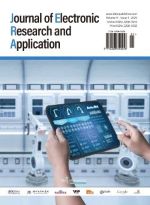Research on Low-Energy Information Transmission Based on Wireless Network
Abstract
In this paper, the topological structure of the vehicle wireless network M2M (Machine to Machine) is used as the experimental research model, and four kinds of light coefficients are set as factors affecting the experimental results, namely, light intensity factor ∈ and α, to represent the light intensity coefficient and influence factor. The remaining energy consumption of mobile terminal equipment was measured respectively, the distance parameter from device to device, the maximum transmission energy consumption, and the correlation coefficient between environmental parameters and energy consumption parameters was analyzed. This paper discusses the impact of different topological structures on the environment, energy saving and emission reduction in the relatively flat terrain area, based on the planning scheme of parking area within the coverage range of base station signal, the transmission capability of vehicles as mobile device nodes within the coverage range of base station signal, and the signal coverage range of base station under different light intensity. As the distance between the base station and the vehicle mobile device node changes, the maximum transmission energy consumption of the mobile device node is obtained. Based on the above factors, the optimal performance optimization parking scheme and the optimal energy consumption optimization transmission scheme are obtained.
References
Anon., 2018, Performance Analysis of Cooperative NOMA-Based Intelligent Mobile Edge Computing System. China Communications, 08: 46–52.
Ciociola A, Giordano D, Vassio L, et al., 2023, Data-Driven Scalability and Profitability Analysis in Free-Floating Electric Car Sharing Systems. Information Sciences, 621: 545–561.
Luo X, Ouyang J, 2020, A Low-Cost Switchable Circularly-Polarized Transmit 1024-Element Phased Array for Ka-Band SATCOM. Proceedings of the 5th International Conference on Communication, Image and Signal Processing (CCISP 2020), 1(1): 33–36.
Zhang H, Zhang L, Guo Y, et al., 2022, Data Transmission Mechanism of Vehicle Networking Based on Fuzzy Comprehensive Evaluation. Open Mathematics, 1(22): 1909–1923.
Ju X, Li W, 2022, Research on Real‐time Road Condition Display System Based on Vehicle Network. SID Symposium Digest of Technical Papers, S1(53): 1053–1056.
Hu Y, Zhang W, Zhou Z, et al., 2024, Research on Low-Energy Multipath Routing Algorithm Wireless Sensor Network. Computer and Digital Engineering, 52(02): 349–352.
Ding X, Zhang W, Xu S, 2022, Research on Low Energy Consumption Routing Optimization Method in F Optic Wireless Integrated Network. Laser Journal, 43(12): 128–132.
Yi Y, 2022, Research on the Localization and Time Synchronization Mechanism of Wireless Sensor Networks under Low Energy Consumption. Journal of Hunan Post and Telecommunications Vocational College, 21(03): 21–24.
Yan Y, 2021, Research on Energy-Efficient Data Collection Mechanism in Wireless Sensor Networks, dissertation, Nanjing University of Posts and Telecommunications.
Liu P, 2021, Design of Low-Power and High-Reliability Wireless Sensor Network Routing Protocol, dissertation, Nanjing University Aeronautics and Astronautics.

